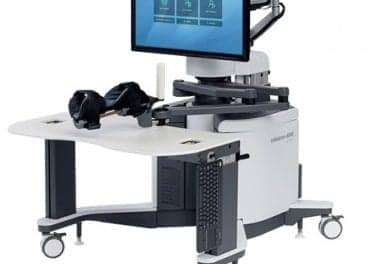.png) A study appearing in the March issue of the New England Journal of Medicine indicates that a catheter procedure designed to close a hole in patients’ hearts is no more effective than medical therapy in preventing recurrent strokes. Researchers report that in the CLOSURE I trial, they compared a catheter procedure to medical therapy in order to assess their effectiveness in preventing new strokes or transient ischemic attacks (TIAs) in patients in patients aged 18 years to 60 years with unexplained stroke or TIA and patent foremen ovale (PFO).
A study appearing in the March issue of the New England Journal of Medicine indicates that a catheter procedure designed to close a hole in patients’ hearts is no more effective than medical therapy in preventing recurrent strokes. Researchers report that in the CLOSURE I trial, they compared a catheter procedure to medical therapy in order to assess their effectiveness in preventing new strokes or transient ischemic attacks (TIAs) in patients in patients aged 18 years to 60 years with unexplained stroke or TIA and patent foremen ovale (PFO).
According to a recent news release, during the international multi-site study, researchers of the Cleveland, Ohio-based University Hospitals (UH) Case Medical Center and Case Western Reserve University School of Medicine aimed to demonstrate the efficacy of a closure procedure using the STARFlex Septal Closure System, compared to medical therapies such as aspirin or warfarin alone. The study’s results indicated no statistically significant differences between the two therapies. Researchers note that they enrolled 909 patients at 87 US and Canadian sites during 64 months, ending in October 2008.
Researchers add that a portion of the patients were treated using medical therapy using 325 milligrams of aspirin, the appropriate dose of warfarin, or a combination of both. Another set of patients were treated with a combination of PFO closure and medical therapy, encompassing 75 milligrams of clopidogrel for 6 months and 325 milligrams of aspirin for 2 years.
“Based on the trial results, even though a patient had a PFO and a recurrent stroke, the hole may be totally coincidental to the second stroke,” notes Anthony J. Furlan, MD, lead study investigator, chairman of the department of Neurology at UH Case Medical Center and Case Western Reserve University School of Medicine. Furlan adds that the criteria for diagnosing paradoxical embolism and the potential efficacy of PFO closure in patient subgroups requires further study, “Until then we would advise initial secondary stroke prevention with medical therapy in most patients with unexplained stroke or TIA and a PFO.”
Source: University Hospitals Case Medical Center



